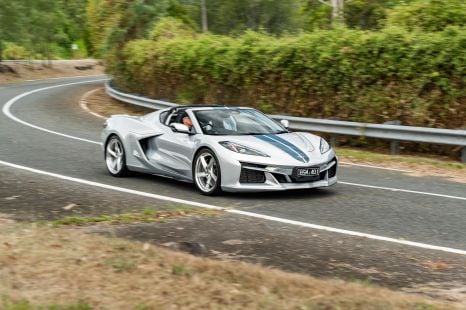

CarExpert.com.au
The CarExpert team's favourite cars of 2025
4 Hours Ago
The redesigned Mercedes-Benz C-Class offers a range of electrified four-cylinder engines, more technology than before, and a roomier cabin.

News Editor
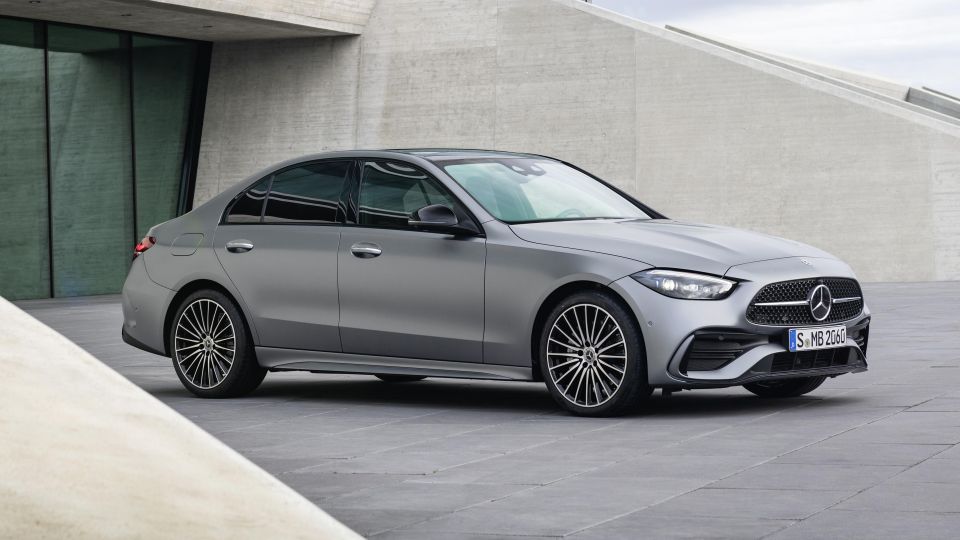

News Editor
Some sedans and wagons are still strong sellers. Case in point: the Mercedes-Benz C-Class.
Now, there’s a new generation, which brings a range of electrified four-cylinder engines, the latest MBUX infotainment system, and more interior room.
Australian deliveries begin in the fourth quarter of this year.
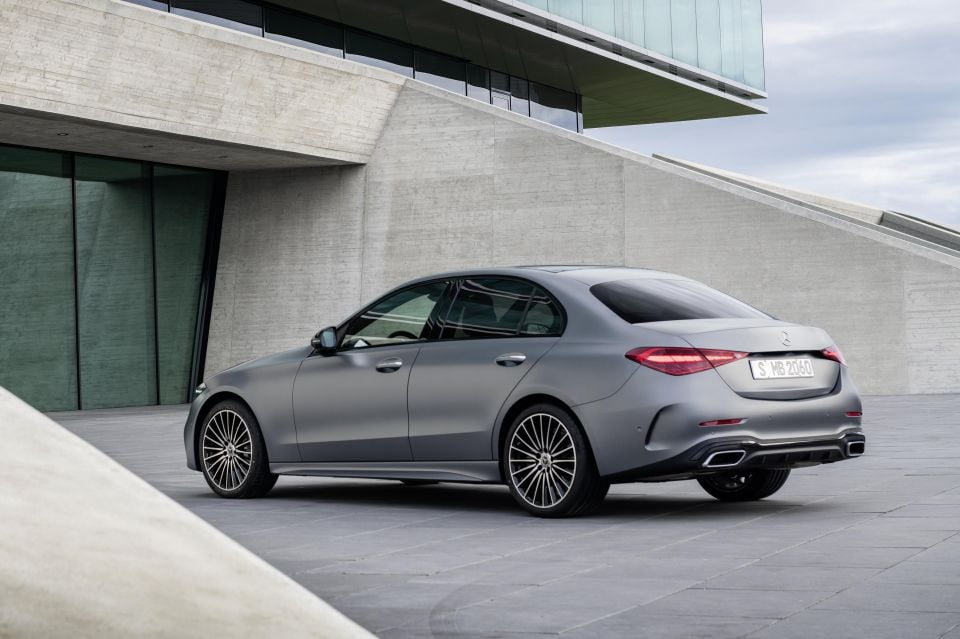
While details of the Mercedes-AMG variants have yet to be released, Mercedes has confirmed the engine lineup for mainstream models.
All models use a turbocharged four-cylinder engine with a 48V mild-hybrid system.
C180 and C200 models use a 1.5-litre engine with 125kW of power and 250Nm of torque and 150kW of power and 300Nm of torque, respectively.
A rear-wheel drive C200 sedan does the 0-100km/h dash in 7.3 seconds.
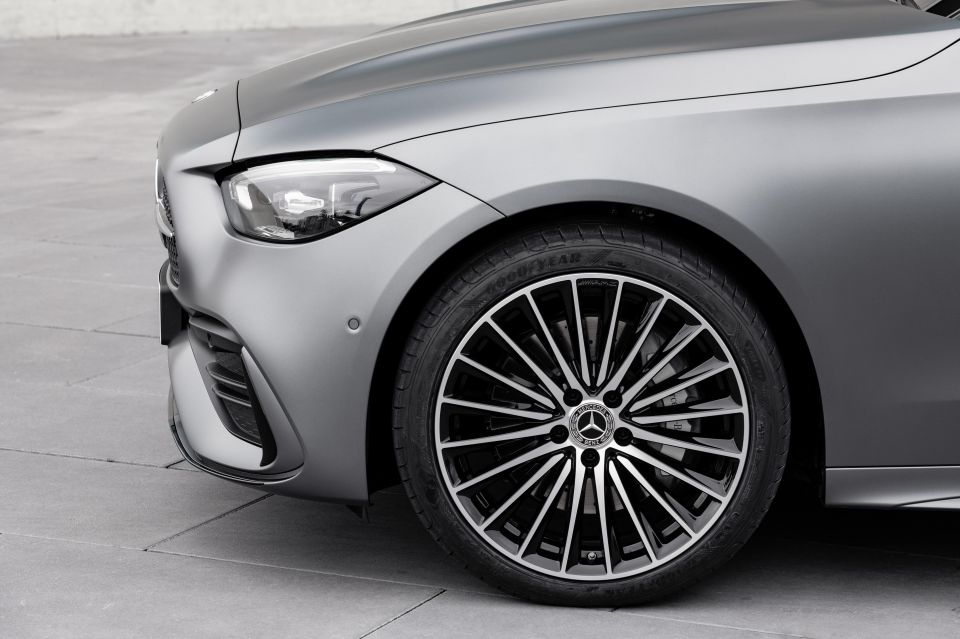
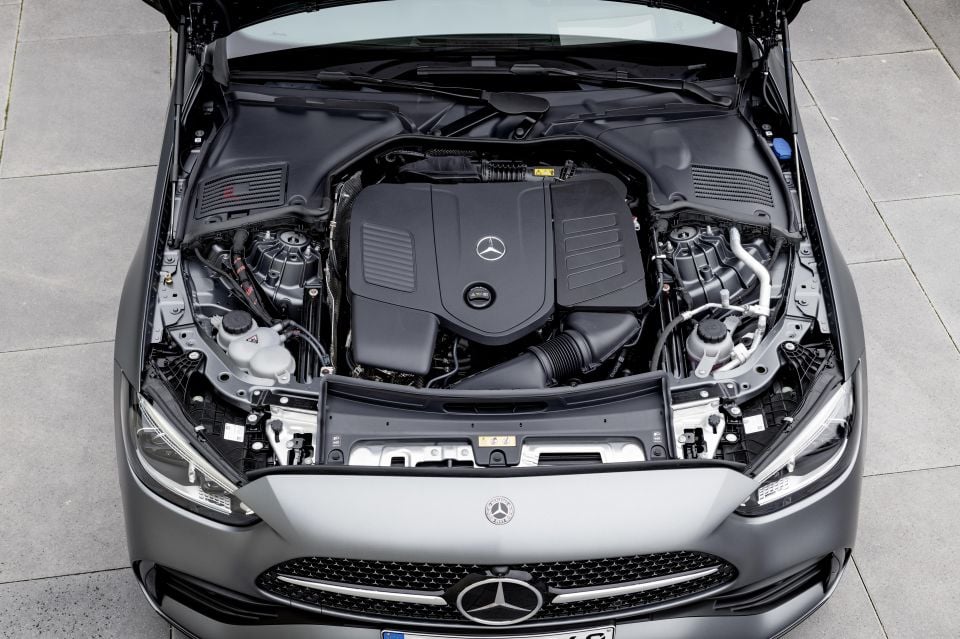
The C300 features a larger 2.0-litre engine with 190kW of power and 400Nm of torque, with a 0-100km/h time of 6.0 seconds.
All engines are capable of providing a quick boost of 15kW and 200Nm due to the mild-hybrid system.
C220d and C300d turbo-diesel models will be available in Europe.
A nine-speed automatic transmission is standard across the range.
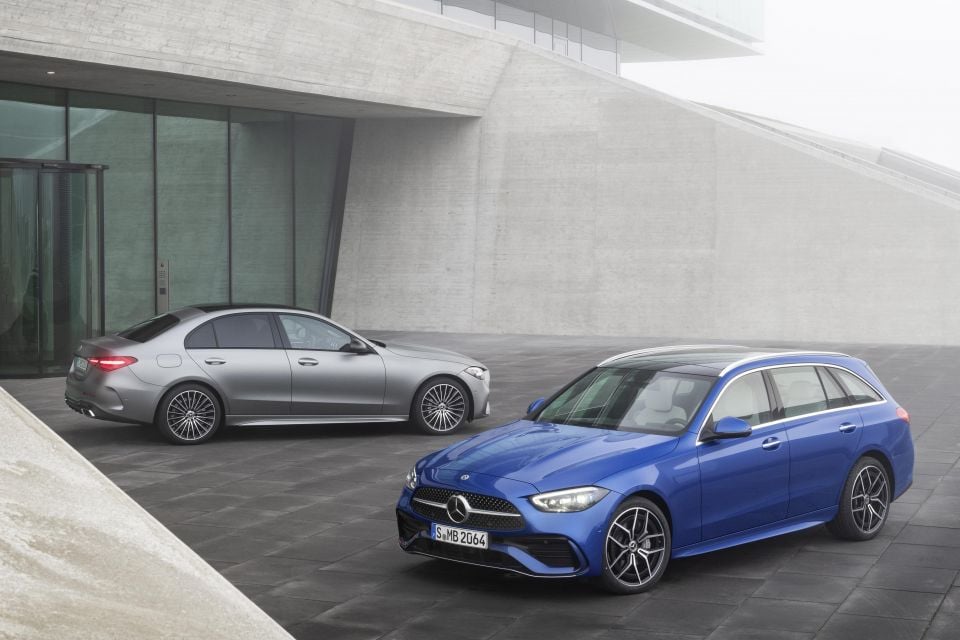
Plug-in hybrid (PHEV) petrol and diesel models will follow later, with the 2.0-litre petrol version offering 100km of electric range under the stricter WLTP standard.
The PHEV will use a 25.4kWh battery and an electric motor with 95kW of power and 440Nm of torque.
They can be charged at up to 11kW with an AC charger and 55kW with a DC charger and can be driven in pure electric mode at speeds of up to 140km/h.
In all bar Sport mode, you’ll be able to adjust the energy recovery rate using rocker switches behind the steering wheel, while a battery hold mode conserves your electric charge.
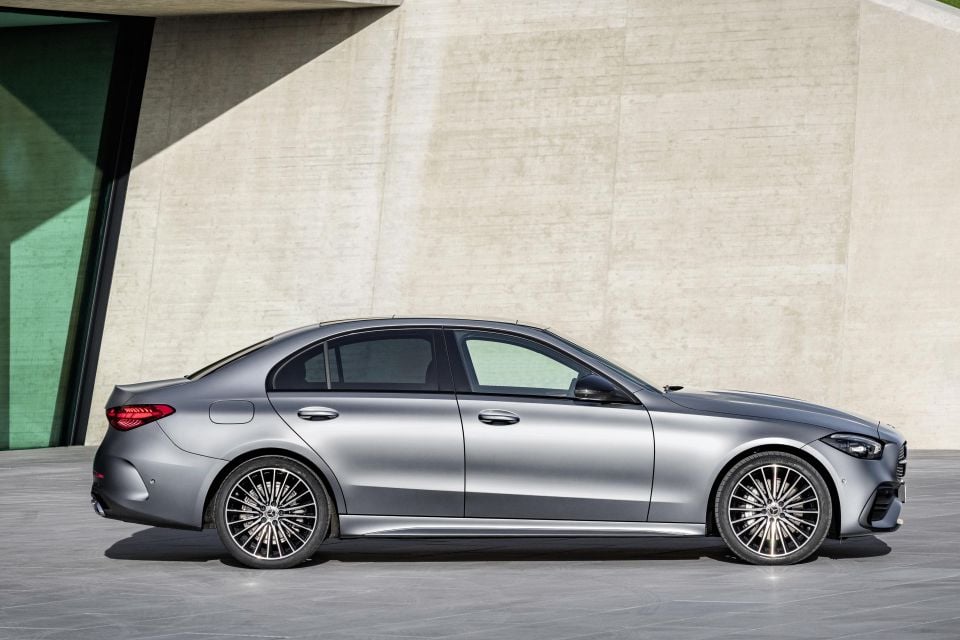
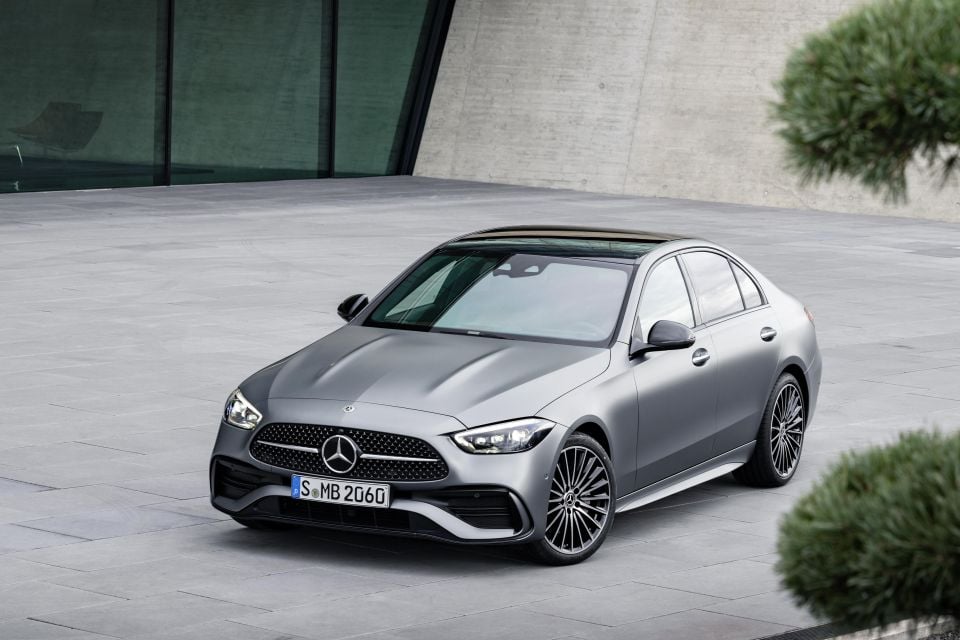
The suspension uses a new four-link axle at the front and a multi-link axle at the rear, with continuously adjustable damping optional. PHEV models feature standard rear air suspension.
Optional is rear-axle steering, which reduces the C-Class’ turning circle by 43cm to 10.64m and reduces the amount of steering input needed. For example, in a rear-wheel drive model you’ll only need to turn the steering wheel 2.1 turns for full lock instead of 2.35 turns.
At speeds below 60km/h, the rear wheels steer in the opposite direction to the front wheels.
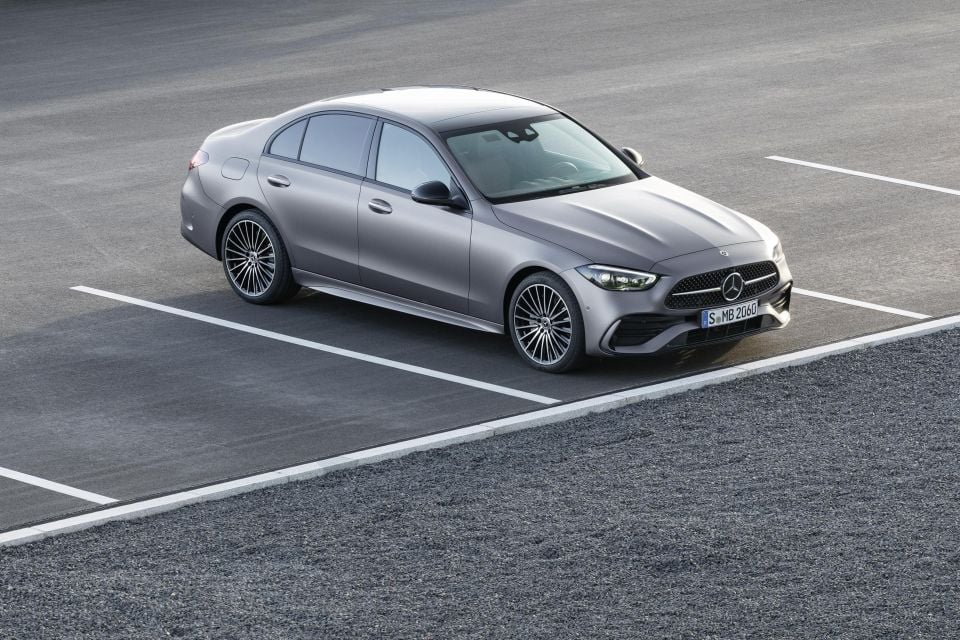
The new sedan measures 4751mm long, 1438mm tall, and 1820mm wide (2033mm including the exterior mirrors).
That makes it 65mm longer, 10mm wider but 9mm lower.
The wagon has been stretched too, measuring 49mm longer though 7mm lower.
Both models ride a 2865mm wheelbase, 25mm longer than the outgoing generation, while the front track is 19mm wider and the rear track has grown by 48mm.
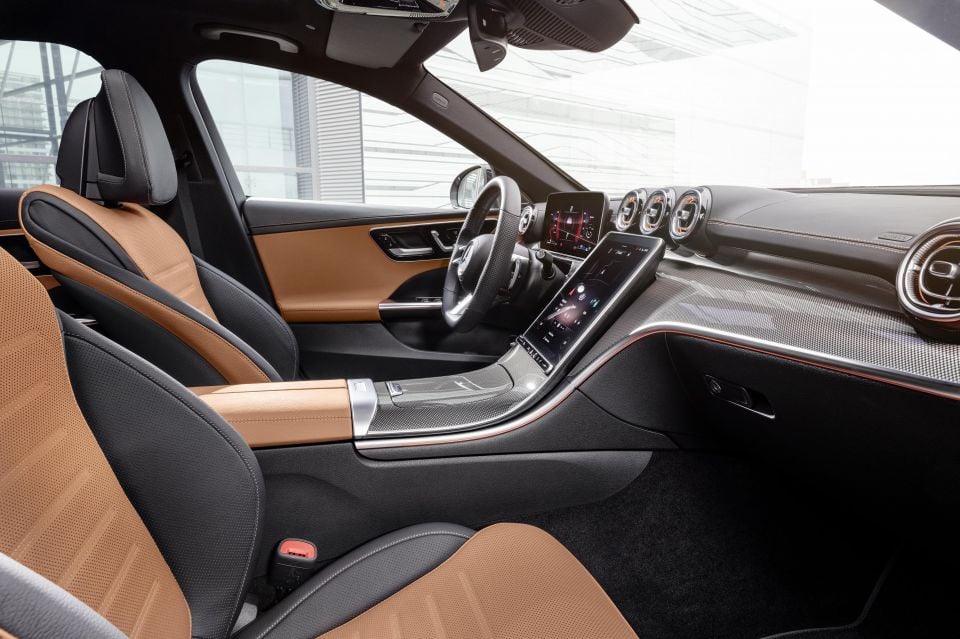

The larger footprint can be felt in the cabin, with rear legroom growing by 21mm, rear elbow room by 15mm, and rear shoulder room by 13mm.
Up front, elbow room has increased by 22mm and shoulder room by 26mm.
Luggage space is unchanged for the sedan at 455L (VDA), though the wagon now has 490L or 1510L with the rear seats down. That’s an improvement of 30L.
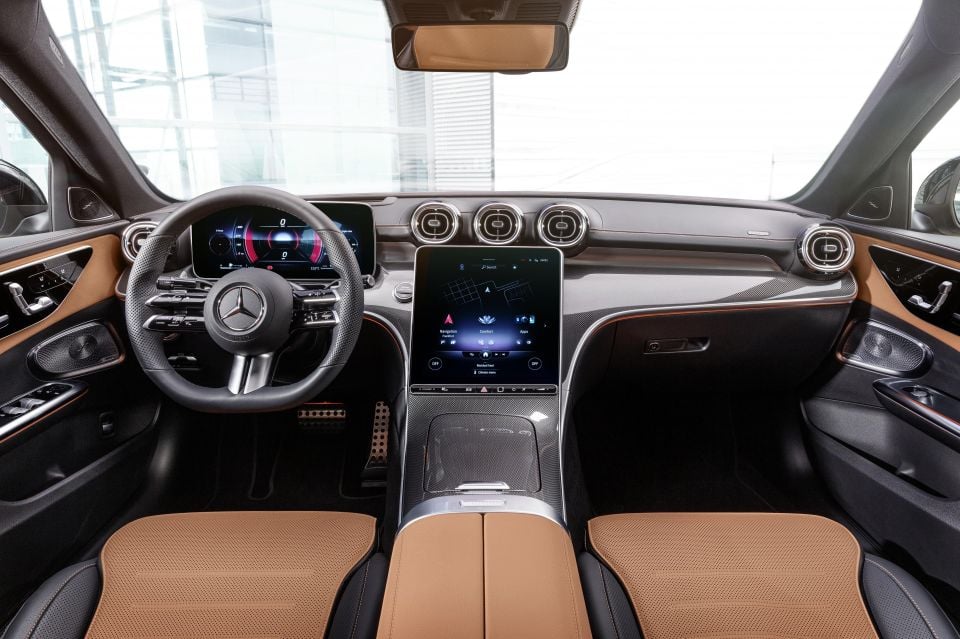
The interior is heavily inspired by the S-Class and offers a choice of 10.25-inch and 12.3-inch digital instrument clusters and 9.5-inch and 11.9-inch touchscreens for the infotainment system.
The touchscreen is tilted towards the driver by six degrees and runs the second generation of MBUX, which debuted in the new S-Class.
It supports over-the-air updates and features a fingerprint scanner for unlocking.
There’s Smart Home integration that works with Bosch Smart Home and Samsung SmartThings, though other devices will be supported. You can ask a question like, “Hey Mercedes, is there anybody in my home right now?” or “Did I remember to turn the heating down?” and it’ll communicate with your smart home device.
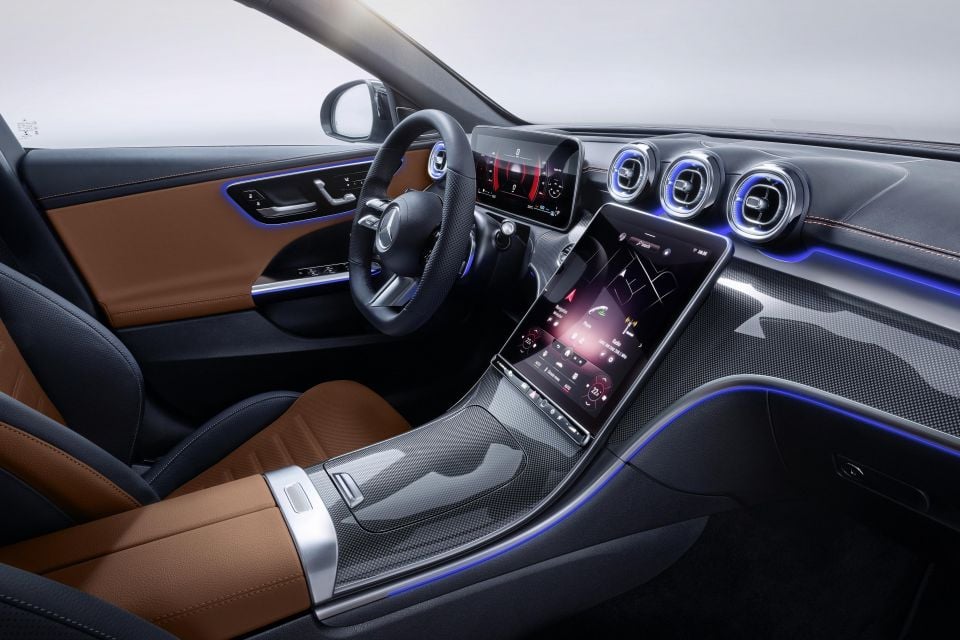
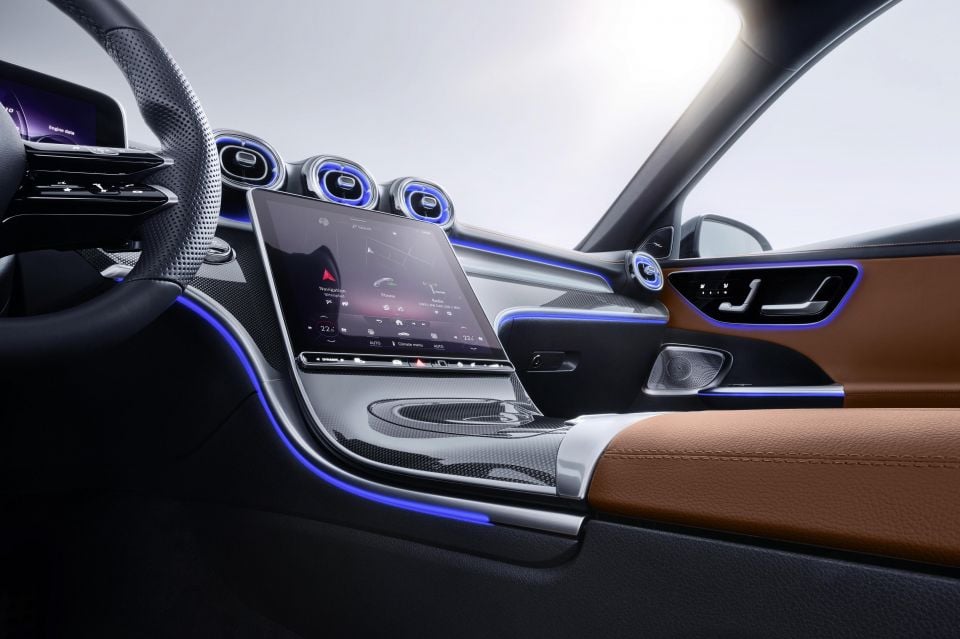
In-car tech options include an augmented video mode that displays, for example, directional arrows on a camera projection in the touchscreen, plus a colour head-up display, massaging front seats and heated rear seats.
The exterior styling is cleaner than the outgoing model, with unfussy flanks.
Drag coefficient is unchanged at 0.24 for the sedan and 0.27 for the wagon.
Three different grilles are available. Base models have a central star and louvres, with Avantgarde models adding a chrome surround and additional decorative elements and AMG Line models featuring a diamond grille with a chrome star design.
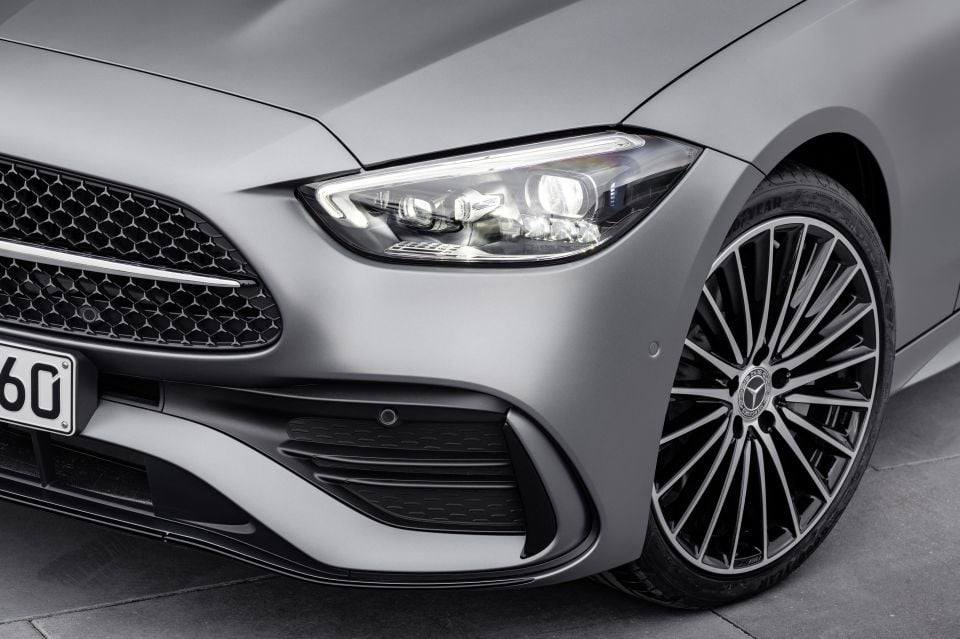

LED headlights are standard, with the S-Class’s Digital Light system optional. As in the flagship Benz, it will deploy guide lines on the road in road work zones, warning symbols on the road when you’re driving the wrong way down a one-way street, and can illuminate pedestrians with a spotlight function.
The traffic sign recognition system now recognises signs on overhead gantries and at roadworks, even recognising conditional instructions (e.g. “when wet”).
The new C-Class will be produced in Bremen, Germany; Beijing, China; and East London, South Africa.
The C-Class has been the highest-volume Mercedes-Benz model over the past decade, with 2.5 million sedan and wagon models since the outgoing generation was launched in 2014.
If you include all four body styles, it was Mercedes-Benz’s third best-selling line last year in Australia after the A-Class and GLC.
MORE: Mercedes-Benz C-Class news, reviews, comparisons and videos
Where expert car reviews meet expert car buying – CarExpert gives you trusted advice, personalised service and real savings on your next new car.
William Stopford is an automotive journalist with a passion for mainstream cars, automotive history and overseas auto markets.


CarExpert.com.au
4 Hours Ago


Damion Smy
2 Days Ago
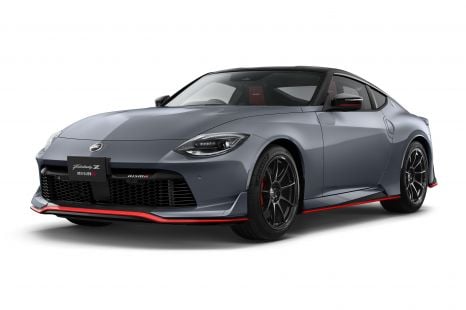

Derek Fung
4 Days Ago


Damion Smy
5 Days Ago
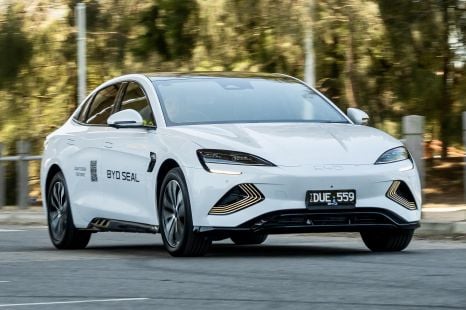

Max Davies
9 Days Ago
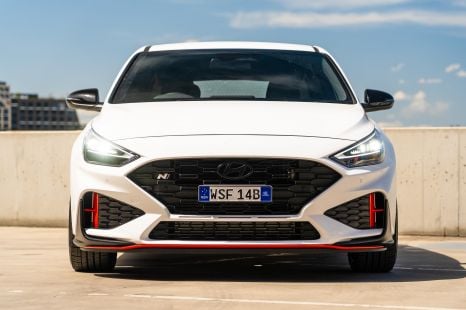

William Stopford
16 Days Ago